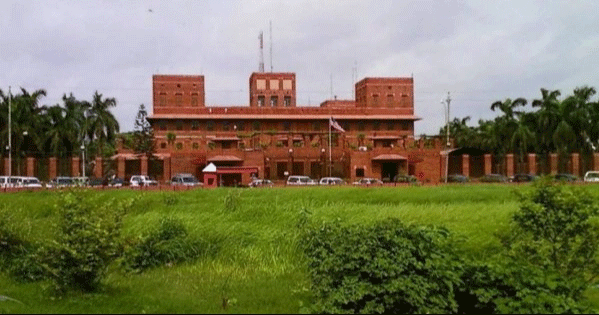Bangladesh ranks lowest in health sector index: ADB
Mahfuja Mukul : Bangladesh’s fragile health care has been discussed at various times. However, there has been no significant progress in this sector in the last decade.Inadequate hospital beds, shortage of doctors and nurses, shortage of skilled lab technicians, all together, the health sector of the country is in shambles.
A report published recently by the Asian Development Bank (ADB) has highlighted this in detail. According to ADB’s ‘What Has Covid-19 Taught Us About Asia’s Health Emergency Preparedness and Response?’ report, Bangladesh has an average of one hospital bed per 1,000 people. Again, there is one doctor for every thousand people.But there is less than one nurse.
And there are less than two lab technicians for every thousand people.
The report highlights health infrastructure data for 44 countries in the Asia-Pacific region.It shows that Georgia has the highest number of doctors per 1,000 patients among countries in the Asia-Pacific region;The number of which is five.
Besides, there are more than four doctors on average in Algeria, Armenia and Kazakhstan.Maldives has the best position in this index in South Asia.The country has more than three doctors for every thousand people.Sri Lanka, Nepal and Pakistan are also above Bangladesh.
Bangladesh has an average of one doctor for every thousand people.On February 29, Health Minister Samanta Lal Sen told the National Parliament that currently there are 29,561 doctors with bachelor’s degree in government hospitals in the country.
The number of nurses with graduation degree is 6,650, of which 3,904 are BSc in Nursing, 1,597 are BSc in Public Health Nursing (Post Basic) and 1,149 are BSc in Nursing (Post Basic).
Besides, there are five graduate pharmacists.Meanwhile, according to the final report of Bangladesh Bureau of Statistics (BBS) ‘Census 2022’ published last year, the total number of doctors and dentists in the country is only 179,160 people.And the population of the country is 16 crore 98 lakh 28 thousand 911.That is, for every one thousand, there are doctors and dentists collectively, one and one-tenth zero five.
There are 83,500 nurses/midwives in the country.That means there are 0.49 nurses/midwives for every thousand people.
According to the ADB report, Uzbekistan and Azerbaijan have the highest number of nurses/midwives per 1,000 patients in the Asia-Pacific region.The number of these two countries is 120 people.This number is 110 in Kazakhstan, 85 in Turkmenistan and Armenia, 80 in Singapore, 75 in Brunei and Thailand.
In addition, there are an average of 60 or more nurses per 1,000 patients in Malaysia, Neo Islands, Cook Islands, Palau and Thailand.The average of countries in the Asia-Pacific region is 42.8.
However, among the countries in the region, only Afghanistan has a lower average number of nurses than Bangladesh. Medical lab technicians are also very less in Bangladesh.In this case, the average of countries in the Asia-Pacific region is 27.5 people per lakh.
In Bangladesh this number is less than 20.In other words, there are not even two medical lab technicians for every 10,000 people.Among the countries in the Asia-Pacific region, Singapore is at the top in this regard.The country has more than 10 medical lab technicians for every 10,000 people.Besides, there are more than 70 lab technicians in Taiwan, more than 60 in China and Brunei and 60 in South Korea. Meanwhile, Bangladesh does not have an average of one hospital or clinic for every one lakh people.And the average number of hospital beds is one per thousand people.South Korea has the highest average number of hospitals per million people;The number of which is 15.The country averages more than eight hospital beds per thousand people.
Mongolia, Azerbaijan, Taiwan and Kazakhstan have an average of more than six hospital beds.The average of countries in the Asia-Pacific region is 2.90 per thousand.
On February 29, Health Minister Samanta Lal Sen told the National Parliament that the number of beds in government hospitals in the country is 71,660 and private hospitals are 99,975.
In other words, there are a total of 171,675 beds in the hospital.As such there is one bed against every 990 people.And against every 50 people in the country, the number of beds in government hospitals is 0.021 (0.021), the health minister said, the government has a plan to gradually increase the number of beds in government hospitals.
He also said that the government has taken various initiatives to ensure universal healthcare by 2030.Necessary preparations are being made to introduce social health insurance for formal sector government employees and garment workers.In the future, the informal sector population will also be covered under this insurance.
President Joe Biden tests positive for COVID-19 while campaigning in Las Vegas, has ‘mild symptoms’
International Desk: President Joe Biden tested positive for COVID-19 while traveling Wedne…








